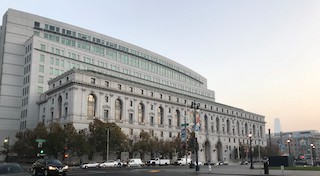In October 2012, 24-year-old Christopher Zinn and his girlfriend, 21-year-old Brieanna Dow were shot to death in an unincorporated area of Contra Costa County. Both Dow and Zinn were Black.
Evidence was presented at trial that brothers Sheldon Silas and Reginald Whitely, both members of a San Francisco street gang, suspected Zinn, a fellow gang member, had stolen guns from them. Silas and Whitely then went to Zinn’s apartment. Lamar Michaels drove them. Silas and Whitely confronted Zinn and Dow about the guns, which caused Zinn and Dow to run. Silas and Whitely then gave chase in the car driven by Michaels, ultimately shooting both to death on the side of the road.
Subsequently, Linda Chaney, Whitely’s girlfriend, was charged with various counts related to attempts to dissuade two witnesses from testifying. Chaney was also charged with forty-nine felony counts of entering jail grounds as an ex-convict.
Silas, Whitely, Michaels and Chaney are all Black, like the victims.
 Court of Appeal First Appellate District San Francisco
Court of Appeal First Appellate District San Francisco
Trial began in October 2015 and the prosecution excused six Black jurors on peremptory challenges. There were then no Black jurors on the jury except one alternative juror. Defendants made Batson / Wheeler (Batson v. Kentucky (1986) 476 U.S. 79; People v. Wheeler (1978) 22 Cal.3d 258) motions as to each excused juror, arguing that the prosecution improperly excused such Black jurors on the basis of race or ethnicity is an error of constitutional magnitude, which if proven, requires reversal. People v. Silva (2001) 25 Cal. 4th 345, 386.
Such removal of potential jurors based on race or ethnicity violates a defendant’s right to trial by a jury drawn from a representative cross-section of the community under article 1, section 16 of the California Constitution and the right to equal protection under the Fourteenth Amendment to the United States Constitution. People v. Blacksher (2011) 52 Cal. 4th 769, 801.
The judge denied all six motions. Whitely’s trial counsel then died and the judge granted a mistrial.
Trial then began again in August 2016. The operative information charged Silas, Whitely and Michaels with two counts of murder, one count of conspiracy to commit murder and other firearm-related felonies. Numerous sentencing enhancements were also alleged, including multiple-murder and gang-murder special circumstances, firearm enhancements and gang enhancements. Chaney was charged with one count of conspiracy to dissuade a witness and one count of witness dissuasion after the fact.
The jury convicted each defendant of all charges alleged. The judge sentenced Silas to life without the possibility of parole (LWOP) plus 70 years to life plus seven years. Whitely was sentenced to LWOP plus 50 years to life plus seven years. Michaels was sentenced to LWOP plus 67 years to life plus eight years, eight months. Chaney was sentenced to 11 years in state prison.
Defendants appealed on many grounds. During jury selection, the prosecutor exercised peremptory challenges against three Black jurors and each challenge was the subject of a Batson / Wheeler motion.
This article will just focus on the judge’s decision to deny the Batson / Wheeler motion as to one juror, Juror 275, insofar as the prosecution’s dismissal of her after her responses to questions about the Black Lives Matter (BLM) group.
Juror 275 was a twenty-five-year-old Black woman who was employed as a mail carrier. She answered a juror questionnaire, indicating she supported BLM and indicated she had strong feelings that our criminal justice system treats people differently than others based on gender, race, religion or national origin, but she indicated that this would not affect her as a juror.
The Batson / Wheeler motion must show three things. People v. Gutierrez (2017) 2 Cal. 5th 1150, 1158. First, defendant must demonstrate a prima facie case by showing that the totality of the relevant facts gives rise to an inference of discriminatory purpose. Id. In this case, the judge found such an inference in dismissing Juror 275.
Second, if defendant makes a prima facie showing, the burden shifts to the prosecution to “state nondiscriminatory reasons for the challenge.” People v. Hardy (2018) 5 Cal. 5th 56, 75. Here, the prosecutor stated that Juror 275 showed hostility toward prosecutors.
Third, if the prosecutor provides a facially adequate explanation for the challenge, the judge must decide whether defendant has proven purposeful discrimination, which requires a showing that it was more likely than not that the juror excusal was “motivated in substantial part by discriminatory intent.” Here, the judge did not find such intent.
On appeal to the First Appellate District, the appellate court reversed the trial court and the judgements were reversed and the case was remanded for a new trial.
The citation for the First Appellate District Court ruling discussed above is People v. Sheldon Silas (1st App. Dist., 2021) 68 Cal. App. 5th 1057, 284 Cal. Rptr. 3d 48.
For more information about juror exclusion based on racial issues, please click on the following articles:
 Court of Appeal First Appellate District San Francisco
Court of Appeal First Appellate District San Francisco